Top Reasons Romania Industries Choose Pallet Inverters for Cost-Competitive Pallet Systems for Logistics Hubs
Are you constantly battling rising operational costs in your logistics hub or manufacturing facility? You spend enormous effort optimizing production, only to see profits get eaten away by inefficient handling, damaged goods, and slow pallet-exchange processes. It’s a frustrating cycle. Your team works hard, but outdated methods create bottlenecks, increase the risk of workplace injuries, and ultimately slow down your entire supply chain. This problem only gets worse as market demands fluctuate and the pressure to reduce costs intensifies. What if there was a straightforward mechanical solution that could solve these issues, making your operations faster, safer, and more profitable?
Romanian industries choose pallet inverters primarily for significant cost reductions, enhanced operational speed, and improved worker safety. These machines streamline logistics by quickly and automatically transferring loads between different types of pallets, such as from in-house wooden pallets to plastic export pallets. This eliminates costly manual labor, reduces product damage during handling, and optimizes warehouse space, creating a highly cost-competitive system for any logistics hub.
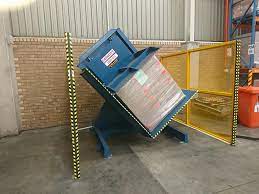
I've spent over two decades in the packing machine industry, starting as an engineer on the factory floor and eventually building my own company, SHJLPACK. I’ve seen firsthand how a single piece of equipment can revolutionize a company's workflow. While this article focuses on the trends I’ve observed in Romania, the principles of efficiency and cost savings are universal. Whether you're running a third-party logistics (3PL) warehouse in Bucharest or managing the immense output of a steel mill in Mexico, the core challenges of moving goods safely and economically are the same. Let's dive deeper into why pallet inverters are becoming an indispensable tool for smart business leaders.
How do pallet inverters enhance operational efficiency in Romanian logistics hubs?
Is your dispatch area a constant bottleneck? Do you see forklifts waiting, workers struggling to manually restack goods, and shipping schedules slipping? This chaos isn't just stressful; it's a direct drain on your efficiency. Every minute spent on slow, manual pallet transfers is a minute lost for value-added activities. This inefficiency ripples through your entire operation, delaying order fulfillment, increasing labor costs, and preventing you from reaching your facility's true potential. You need a way to make this process smooth, fast, and predictable.
Pallet inverters dramatically enhance operational efficiency by automating the slow and labor-intensive task of load transfer. Instead of requiring multiple workers to manually move boxes or bags from one pallet to another, a single operator can use a pallet inverter to transfer a full load in under a minute. This massive time-saving measure clears bottlenecks at shipping and receiving docks, increases throughput, and allows you to reallocate your valuable workforce to more productive tasks, directly boosting your plant's overall capacity utilization.
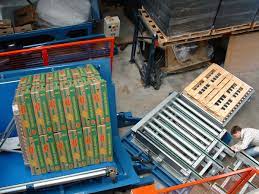
Breaking Down the Efficiency Gains
When I talk to plant managers, their biggest goal is often improving throughput without a massive capital investment in expanding the building. They are looking for smart, targeted investments. A pallet inverter is exactly that. It's not just about speed; it's about creating a more fluid and reliable workflow. Let's look at the specific ways it improves efficiency.
From Minutes to Seconds: The Time-Saving Impact
The most direct efficiency gain comes from time. A manual transfer of a full pallet can take two workers 15-20 minutes, depending on the product. It's tedious and physically demanding. A pallet inverter accomplishes the same task in about 60 seconds with one operator. For a facility that processes 50 pallets a day, that's a shift from over 12 hours of manual labor to less than one hour of machine-assisted work. This frees up your team to focus on picking, packing, and loading trucks. For a leader like Javier Morales, whose goal is to push equipment uptime to 95%, eliminating this kind of logistical bottleneck is not a luxury—it's a necessity. A high-speed production line is useless if the finished product can't get out the door efficiently.
Reducing Equipment and Traffic Congestion
Think about the typical manual process. It requires at least one forklift to bring the source pallet, floor space for restacking, and another forklift to take the destination pallet away. This creates congestion in your busiest areas. A pallet inverter centralizes this task. Many models, like our free-standing units, can be loaded directly by a forklift. The driver places the pallet, activates the machine, and moments later, picks up the newly transferred load. This reduces forklift mileage, fuel or electricity consumption, and the chances of accidents in crowded spaces. It simplifies the entire process into a single, predictable station.
| Efficiency Metric | Manual Pallet Transfer | Pallet Inverter Transfer | Impact on Operations |
|---|---|---|---|
| Time per Pallet | 15-20 minutes | ~60 seconds | Drastic increase in throughput |
| Labor Required | 2 workers | 1 operator (often the forklift driver) | Significant labor cost savings |
| Floor Space | Large area for two pallets + workers | Compact machine footprint | Optimizes valuable warehouse space |
| Equipment Use | Multiple forklift trips | Single, streamlined forklift trip | Reduced forklift wear, fuel, and traffic |
| Process Reliability | High variability, risk of error | Consistent, predictable, and safe | Improves planning and scheduling |
This table clearly shows that the efficiency gains go far beyond just speed. They impact your labor, space, and equipment resources, contributing directly to a leaner and more productive operation.
What are the direct cost savings associated with using pallet inverters in Romania?
Are you constantly analyzing your balance sheet, looking for ways to trim operational expenses? You see the big line items for labor, materials, and energy, but the hidden costs of inefficiency are harder to pin down. Damaged products, wasted packaging materials, and lost time all add up, chipping away at your profit margin. These small, recurring costs can amount to tens of thousands of dollars a year. You know you need to cut costs, but cutting staff or compromising on quality isn't an option.
The primary direct cost saving from pallet inverters comes from a massive reduction in manual labor hours. Beyond this, they save money by preventing product damage that occurs during manual restacking, allowing you to use cheaper in-house pallets for storage and switching to compliant (but expensive) pallets only for shipping. This combination of labor, material, and damage-prevention savings delivers a rapid return on investment, often in less than 12 months.
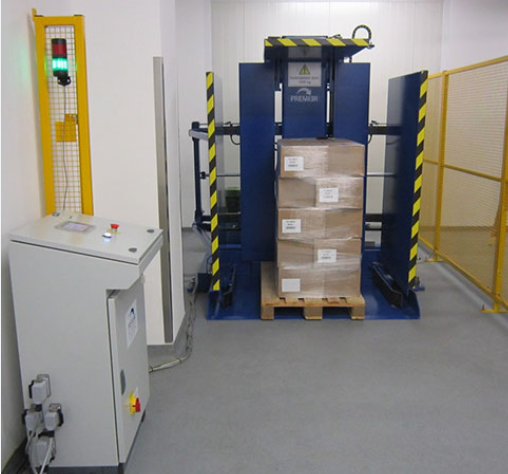
A Practical Look at the Return on Investment (ROI)
When I founded my own factory, every single purchase had to be justified. I didn't have unlimited capital. I needed to know exactly when a machine would pay for itself. Let's do a simple, practical analysis for a pallet inverter. This is the kind of analysis a pragmatic leader like Javier, who demands strict feasibility studies, would appreciate.
Calculating the Tangible Savings
The beauty of a pallet inverter is that its ROI is easy to calculate. It's not based on abstract concepts but on hard numbers.
-
Labor Savings: This is the most significant factor. Let's assume two workers earning €10 per hour each take 15 minutes (0.25 hours) to transfer one pallet. The labor cost is 2 €10 0.25 = €5.00 per pallet. A pallet inverter, operated by the forklift driver for 1 minute, has a negligible additional labor cost. If your facility handles 50 pallets per day, your daily savings are 50 * €5.00 = €250. Over a 250-day work year, that's €62,500 in direct labor savings alone.
-
Product Damage Reduction: Manual handling is risky. A dropped box, a crushed container—these things happen. Let's be conservative and say 1% of manually transferred pallets have some form of damage, with an average value of €50 per incident. For 50 pallets a day, that's 0.5 damaged pallets per day, or €25 in daily losses. Annually, that's another €6,250 saved. A pallet inverter handles the entire load securely, virtually eliminating this type of damage.
-
Pallet Cost Optimization: High-quality plastic or heat-treated wooden pallets for export are expensive, often costing €20-€30 more than standard, reusable in-house pallets. A pallet inverter allows you to keep your products on cheaper, durable pallets within your facility and only switch to the expensive ones right before shipping. If you ship 50 pallets a day, you avoid having to purchase a large, expensive float of export-grade pallets. You can retrieve and reuse them immediately. This saves on pallet inventory costs and reduces the cash tied up in assets.
| Cost Category | Annual Cost with Manual Transfer | Annual Cost with Pallet Inverter | Annual Direct Savings |
|---|---|---|---|
| Labor | €62,500 | ~€0 | €62,500 |
| Product Damage | €6,250 | ~€0 | €6,250 |
| Pallet Inventory | High (large float of expensive pallets) | Low (small float, quick reuse) | Significant Capital Savings |
| Total Monetary Savings | ~€68,750 + Capital Savings |
With numbers like these, it's clear why industries in competitive markets like Romania are adopting this technology. An investment of €30,000-€50,000 in a pallet inverter can pay for itself in well under a year. For a business owner focused on lowering operating costs by 8%, this is a clear and actionable step.
Why are pallet inverters a key component for modern, automated warehouses in Romania?
Are you planning for the future of your warehouse? You see the trend toward automation, robotics, and data-driven logistics, but you're not sure where to start. Your current equipment might be reliable, but it operates in a silo. It doesn't communicate with your other systems. This creates a gap between your physical operations and your digital strategy. To truly advance, you need equipment that can bridge this gap and become part of an integrated, intelligent system.
Pallet inverters are a key component for automated warehouses because they serve as a critical bridge between different internal and external logistics loops. They integrate seamlessly into Automated Guided Vehicle (AGV) and conveyor systems, ensuring that loads are on the correct type of pallet for each stage of the automated process. This ability to automatically standardize pallet types without manual intervention is fundamental to creating a truly "lights-out" logistics operation.
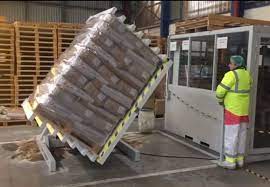
Integrating a "Dumb" Machine into a "Smart" System
When I first started as an engineer, machines were just that—machines. They performed a task, and that was it. Today, that's not enough. For a leader like Javier, who is actively pushing a digital transformation with MES and IoT platforms, every new piece of equipment must be a data point. It must be a node in a larger network. At first glance, a pallet inverter seems like a simple, robust piece of mechanical equipment. But its true power in a modern warehouse is its ability to be the muscle directed by a digital brain.
The Role in a Fully Automated Workflow
Imagine a modern warehouse. An AGV picks up a finished product from the production line on a cheap, captive "factory pallet." It transports it to a central transfer station. This is where the pallet inverter comes in.
- Integration with Conveyors and AGVs: Our pallet inverters at SHJLPACK are designed with automation in mind. They can be equipped with powered roller conveyors on the input and output. The AGV deposits the pallet onto the in-feed conveyor.
- Communication with the WMS/MES: The warehouse management system (WMS) or manufacturing execution system (MES) sends a signal to the pallet inverter, telling it what kind of pallet to switch to (e.g., a plastic Euro pallet for a specific customer, or a heat-treated pallet for international shipping).
- Automated Execution: The inverter automatically executes the 180-degree rotation, exchanges the pallet, and places the load onto the out-feed conveyor.
- Closing the Loop: Another AGV or a stacker crane then picks up the load on its new pallet and moves it to the automated storage and retrieval system (AS/RS) or directly to the shipping dock.
Enabling Standardization and Quality Control
Automation thrives on standardization. Robots and sensors work best when they handle predictable shapes and sizes. Different pallets have slightly different dimensions, deck spacing, and quality. An AGV programmed for a specific pallet type might fail if it encounters a different one. A pallet inverter solves this problem by acting as a standardization gateway.
| Automation Challenge | How a Pallet Inverter Provides the Solution | Strategic Benefit |
|---|---|---|
| Incompatible Pallet Types | Automatically swaps loads to the standard pallet required by the automated system (AGV, AS/RS). | Ensures seamless, uninterrupted flow in the automated warehouse. |
| Poor Quality Pallets | Removes broken or poor-quality wooden pallets from the system, preventing them from jamming conveyors or AS/RS. | Increases the reliability and uptime of the entire automated system. |
| Data Silos | Can be equipped with sensors and PLC controls that integrate with the MES/WMS. | Provides real-time data on pallet transfers, contributing to production visualization. |
| Manual Bottlenecks | Replaces a manual step in an otherwise automated process. | Creates a true end-to-end automated workflow without human bottlenecks. |
This is why a pallet inverter is not just a machine; it's an enabling technology. It's a key puzzle piece for any company serious about building the smart factory of the future. It's a physical investment that directly supports a digital strategy.
How does the adaptability of pallet inverters meet diverse industry needs in Romania?
Does your factory handle a wide variety of products? One day you're shipping heavy, stable boxes, and the next you're dealing with fragile bags or oddly shaped containers. You worry that a single piece of equipment won't be able to handle everything. Investing in a machine that only works for half of your product line is a waste of money. You need solutions that are as flexible as your business, able to adapt to different product types, weights, and handling requirements without complex changeovers.
Pallet inverters are highly adaptable, designed to handle a vast range of product types, from solid boxes and pails to unstable sacks and fragile bottles. With adjustable clamping pressure, wide-opening jaws, and various loading methods (forklift or ground-level), a single machine can be configured to safely and effectively transfer nearly any palletized load. This versatility makes it a valuable asset across diverse industries like food and beverage, pharmaceuticals, chemicals, and heavy manufacturing.
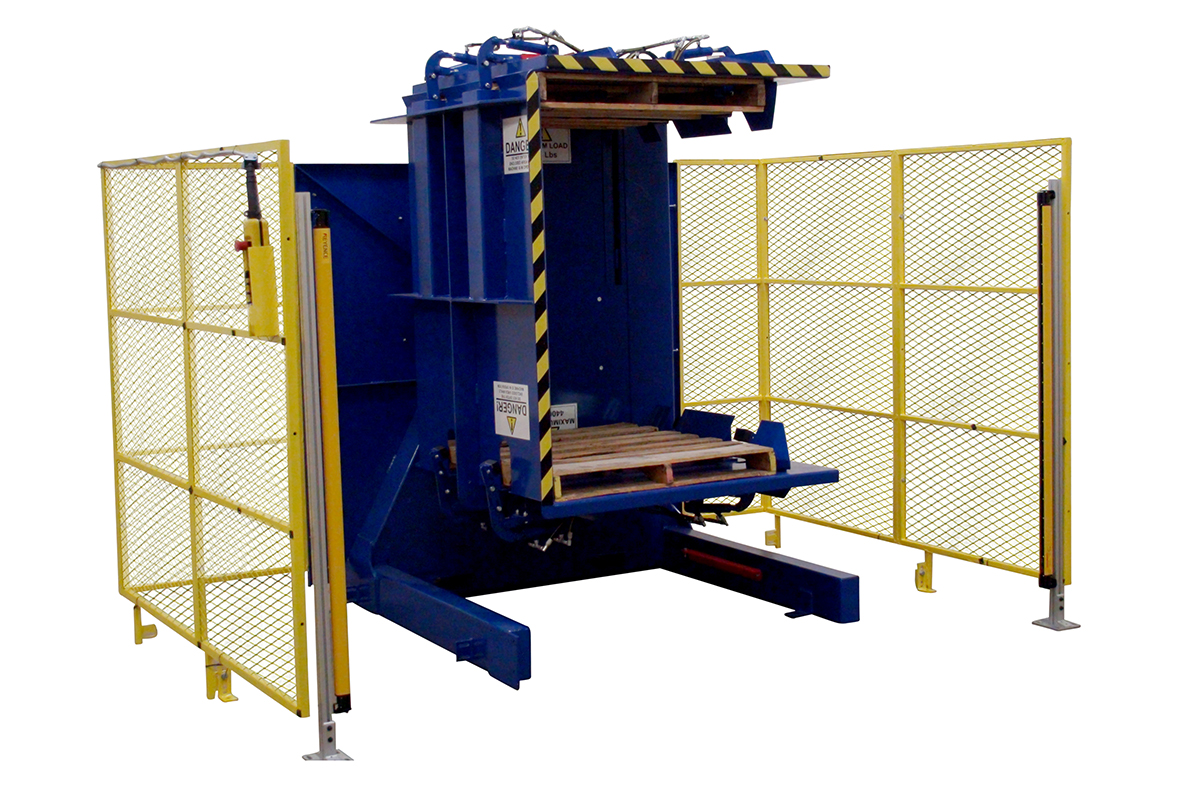
One Machine, Many Solutions
During my career, I've worked with clients from almost every industry imaginable. A food processor handling bags of flour has very different needs from a steel wire manufacturer shipping heavy coils. The success of a machine like the pallet inverter lies in its fundamental simplicity and adaptability. The core concept—clamp, rotate, release—can be modified to suit an incredible variety of loads.
Customizing for Specific Product Needs
Let's break down how a pallet inverter adapts.
-
Adjustable Clamping Pressure: This is perhaps the most critical feature. For a heavy, stable load like steel coils or canned goods, you can apply high pressure to ensure the load is secure. But for fragile items like glass bottles or sensitive electronics, the pressure can be dialed way down to be gentle, holding the load without causing any damage. This is controlled by a simple hydraulic valve, making adjustments quick and easy.
-
Jaw and Platform Design: The "jaws" that clamp the load can be customized.
- Solid Plates: Ideal for boxed goods.
- Guarded Jaws: Some models have side walls to provide extra support for loads that might shift, like bags or small drums.
- Variable Height: The opening range of the machine can be specified to handle both short and very tall pallet loads, ensuring it can accommodate your full range of products.
-
Loading and Configuration:
- Forklift-Loaded (FS Style): The most common type. Fast, efficient, and requires no pit or special installation.
- Ground-Loaded (GL Style): A ramp or a lowering platform allows the pallet to be loaded with a simple hand pallet truck. This is perfect for areas where forklifts are not always available or for improving ergonomics.
- Conveyor-Loaded: For integration into fully automated lines, as we discussed earlier.
| Industry | Common Product | Key Challenge | Pallet Inverter Solution |
|---|---|---|---|
| Food & Beverage | Bags of sugar, boxes of wine | Hygiene, load instability, gentle handling | Stainless steel options, adjustable pressure, side support walls |
| Pharmaceuticals | Vials, boxes of medicine | Cleanroom compliance, no contamination | Stainless steel construction, specialized hygienic designs |
| Chemicals | Drums, pails, sacks | Heavy loads, stability | High-capacity models, strong clamping force |
| Steel & Manufacturing | Coils, parts, finished goods | Extreme weight, durability | Heavy-duty construction, robust engineering for high cycles |
This adaptability is why a pallet inverter isn't a niche product. It's a foundational piece of logistics equipment. It provides a standardized solution to a universal problem, but with the built-in flexibility to cater to the specific needs of your products. This ensures your investment will continue to pay dividends even as your product lines evolve.
My Insights: Looking Beyond the Machine to the Partnership
I've spent this article discussing the technical and financial benefits of pallet inverters. But after more than two decades in this industry, I've learned that for a true leader, the machine itself is only part of the equation. For someone like Javier Morales, who has built a 2-million-ton steel operation from the ground up, an investment is never just about a piece of equipment. It's about reliability, long-term strategy, and partnership. It’s about finding a supplier who understands his challenges with energy costs, aging equipment, and the push for digital transformation.
When I started my own factory, I remembered the frustrations I had as an engineer. I remembered dealing with suppliers who sold me a machine and then disappeared. They didn't understand our workflow. They didn't help us integrate. That's why I built SHJLPACK on a different principle: to be a total solution provider. A pallet inverter is a fantastic tool, but its real value is unlocked when it's part of a cohesive strategy to hit your goals—like lowering overall operating costs by 8%.
How does a simple pallet inverter contribute to solving complex challenges like volatile energy prices? Directly, it doesn't generate power. But indirectly, its impact is huge. By streamlining your logistics, you reduce the run-time of multiple forklifts, which consume significant diesel or electricity. You eliminate the need for manual processes that are inefficient and costly. It's about system-wide efficiency, not just one machine.
When it comes to digital transformation, this is where a true partner stands out. We don't just sell you a pallet inverter. We discuss how its PLC can be integrated with your MES. We ensure it can provide the data you need for your analytics platform to give you that full production visibility you're targeting. An isolated machine is a dead end. An integrated machine is a step towards the smart factory. This is what we mean by a "total solution." It's about understanding your goals—from achieving 95% uptime to meeting environmental standards—and providing the engineering expertise to help you get there. That's the promise I built my company on.
Conclusion
Pallet inverters provide a rapid ROI by cutting labor costs, preventing product damage, and integrating into automated systems, making them a cornerstone for efficient, cost-competitive, and modern logistics operations.


